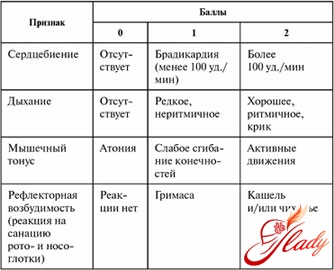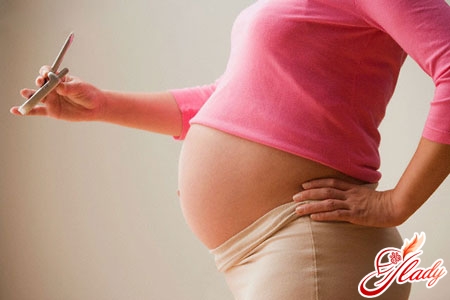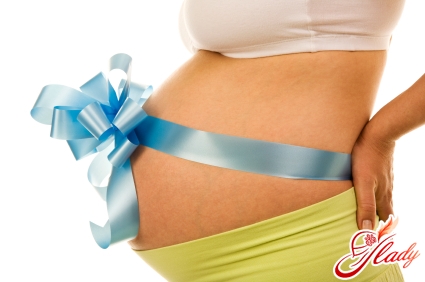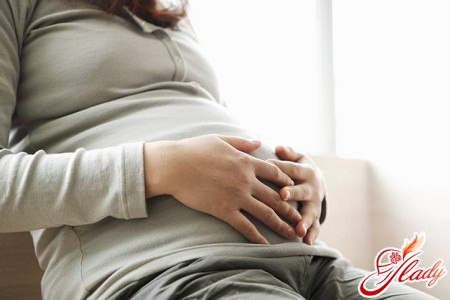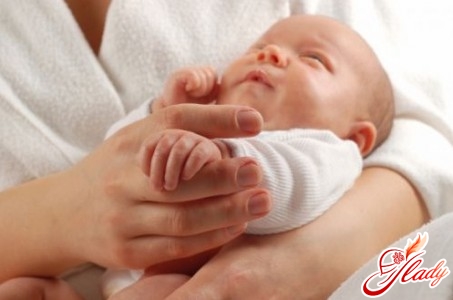 The expected term of delivery has passed, but the desiredsigns are not present, excitement amplifies, but ... In 70 75% the transferred or carried pregnancy is only incorrect statement of terms. Usually this is due to an error in the calculations (the beginning of fertilization is usually mistaken because of the inaccurate date of the last monthly period). In fact, if you resort to ultrasound to assess the timing of pregnancy, the frequency of pregnancy overtaxation decreases from 10% (as was thought for a long time) to 2%. However, a delayed pregnancy is possible, especially in the case of the first birth. If delivery does not occur until 42 weeks, as a rule, childbirth is caused by various methods of stimulation. With a pregnant pregnancy, there are two options for the development of events and decisions that the doctor takes. First, one should question the correctness of determining the date of birth. In this case, if during the entire pregnancy the indicated period corresponded to the size of the uterus and the height of the uterine fundus (the highest point of the uterus), the date of the first movements of the fetus pregnant, the date the doctor listened to the first strokes of the fetal heart, then one can be sure of the correct period of pregnancy. Previously performed ultrasonography or pregnancy test, based on the measurement of the concentration of hCG (chorio gonadotropin) in the blood of a pregnant woman, can additionally confirm the correct date. Secondly, the doctor must be convinced of the normal course of further development of the fetus. Often the fetus grows right and develops on the tenth month of pregnancy (although this can cause difficulties during childbirth, as a large child will have difficulties with the passage through the reproductive organs). However, sometimes the environment inside the uterus, before the ideal, begins to deteriorate. The aging child's place does not supply the appropriate amount of nutrients and oxygen, and the production of amniotic fluid decreases. It is dangerous to reduce the amount of amniotic fluid in the uterus. In these conditions, further development of the fetus in the uterus becomes difficult. Displaced children, as a rule, are thin, with a dry, flaky, wrinkled skin, without a layer of an ancestral lubricant covering usually the skin of a full-term newborn. They have longer nails and hair, open eyes and are more active. Newborns who stayed longer in an unfavorable environment, have a yellowish skin and are more endangered during childbirth. Often, the transferred fetus is born by caesarean section; children who have been in the womb for more than 40 weeks have a large head circumference and / or hypoxia may occur. During labor, they can draw in the original feces. These children also require special supervision in the department for newborns. In other respects, children born at 42 weeks during normal pregnancy are not more likely to suffer from chronic diseases than children born on time. After the 41st week of pregnancy, if it is noted during the examination that the cervix has matured (soft), many doctors prefer to stimulate childbirth. Stimulation of labor or a cesarean section will also be used (regardless of the neck's maturity) if complications such as hypertension (chronic or caused by pregnancy), diabetes mellitus, amniotic fluid green caused by the release of original feces, inhibition of fetal growth or others that threaten the baby of the situation. If the cervix is not ripe, it is possible to speed up this process before stimulating delivery with the introduction of a suitable medication. In this situation, tests are carried out to check the state of the fetus. You can repeat these tests 1-2 times a week before the onset of labor. In some cases, the doctor prefers to wait 42 weeks or more, conducting constant monitoring of the state of health of the mother and fetus. If any adverse events associated with a child's place are noted, or a very small amount of amniotic fluid, or any other signals about the threat to the mother or child, the doctor will immediately act. The situation will tell whether the birth should stimulate or better to resort to Caesarean section.
The expected term of delivery has passed, but the desiredsigns are not present, excitement amplifies, but ... In 70 75% the transferred or carried pregnancy is only incorrect statement of terms. Usually this is due to an error in the calculations (the beginning of fertilization is usually mistaken because of the inaccurate date of the last monthly period). In fact, if you resort to ultrasound to assess the timing of pregnancy, the frequency of pregnancy overtaxation decreases from 10% (as was thought for a long time) to 2%. However, a delayed pregnancy is possible, especially in the case of the first birth. If delivery does not occur until 42 weeks, as a rule, childbirth is caused by various methods of stimulation. With a pregnant pregnancy, there are two options for the development of events and decisions that the doctor takes. First, one should question the correctness of determining the date of birth. In this case, if during the entire pregnancy the indicated period corresponded to the size of the uterus and the height of the uterine fundus (the highest point of the uterus), the date of the first movements of the fetus pregnant, the date the doctor listened to the first strokes of the fetal heart, then one can be sure of the correct period of pregnancy. Previously performed ultrasonography or pregnancy test, based on the measurement of the concentration of hCG (chorio gonadotropin) in the blood of a pregnant woman, can additionally confirm the correct date. Secondly, the doctor must be convinced of the normal course of further development of the fetus. Often the fetus grows right and develops on the tenth month of pregnancy (although this can cause difficulties during childbirth, as a large child will have difficulties with the passage through the reproductive organs). However, sometimes the environment inside the uterus, before the ideal, begins to deteriorate. The aging child's place does not supply the appropriate amount of nutrients and oxygen, and the production of amniotic fluid decreases. It is dangerous to reduce the amount of amniotic fluid in the uterus. In these conditions, further development of the fetus in the uterus becomes difficult. Displaced children, as a rule, are thin, with a dry, flaky, wrinkled skin, without a layer of an ancestral lubricant covering usually the skin of a full-term newborn. They have longer nails and hair, open eyes and are more active. Newborns who stayed longer in an unfavorable environment, have a yellowish skin and are more endangered during childbirth. Often, the transferred fetus is born by caesarean section; children who have been in the womb for more than 40 weeks have a large head circumference and / or hypoxia may occur. During labor, they can draw in the original feces. These children also require special supervision in the department for newborns. In other respects, children born at 42 weeks during normal pregnancy are not more likely to suffer from chronic diseases than children born on time. After the 41st week of pregnancy, if it is noted during the examination that the cervix has matured (soft), many doctors prefer to stimulate childbirth. Stimulation of labor or a cesarean section will also be used (regardless of the neck's maturity) if complications such as hypertension (chronic or caused by pregnancy), diabetes mellitus, amniotic fluid green caused by the release of original feces, inhibition of fetal growth or others that threaten the baby of the situation. If the cervix is not ripe, it is possible to speed up this process before stimulating delivery with the introduction of a suitable medication. In this situation, tests are carried out to check the state of the fetus. You can repeat these tests 1-2 times a week before the onset of labor. In some cases, the doctor prefers to wait 42 weeks or more, conducting constant monitoring of the state of health of the mother and fetus. If any adverse events associated with a child's place are noted, or a very small amount of amniotic fluid, or any other signals about the threat to the mother or child, the doctor will immediately act. The situation will tell whether the birth should stimulate or better to resort to Caesarean section.

Making Money with Desserts: Success Stories
Yevhen Polishchuk (Fedutinov) instagram: @ evgeniyafedutinovavk.com / janeshomebaking– It all started with baking for relatives and friends. Gradually, she began uploading photos of her baking to Instagram, and orders began to come in. I made my first cake to order on October 13, 2014, and a little earlier I started making macarons and cupcakes. We can say that the business "found me myself", I am very [...]

Soups are cold recipes with photos
Cold cucumber soup with yogurt and lemonSorbet from La Taverna restaurant chef Alexander Zhurkina Photo: Getty Images Ingredients: Yoghurt without additives - 125 gCucumber - 150 gSorbet lemon / lime - 50 gCool shrimp - 24 gFresh ginger - 1 gLime lime - 5 gFresh orange juice - 5 gPetroshka - 1 g pink - 1 gCress salad - […]

barbeque kebab
Pork tenderloin glaze Photos: Dmitry Bayrak / dbstudio Cooking time: 20 minutes + time for pickling. Calorie content: 454 kcal per 1 serving. For 4 servings: 4 pork tenderloin (about 300 g each), 1 onion, 2 cloves of garlic, 1 tsp. lemon peel, 1 tsp. lemon juice, a pinch of ground cumin, coriander and turmeric, 1 tbsp. l vegetable [...]

Pierre Duacan: dietary recipes: Ducane diet
Beetroot Photo: Season'S, Luxury Hotels Representation You will need: · Boiled beets - 60 g · Fresh cucumbers - 20 g · Red radish - 20 g · Green onions - 10 g · Egg - 1 pcs · Mineral drinking water - 200 g · Salt - 1 g Ready: · Boil egg and beetroot. · Grind cucumbers, radishes and a part of beets. Putting everything [...]
